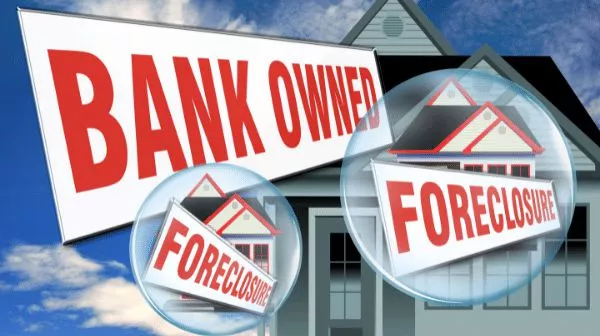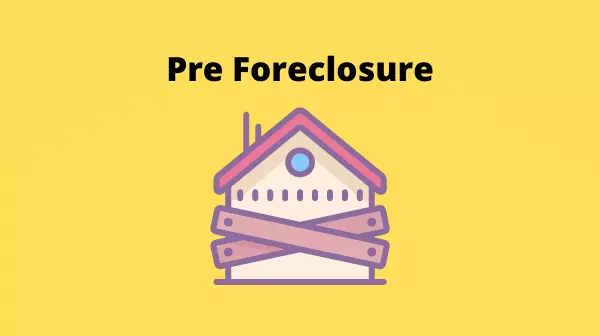Introduction: pre foreclosure
The foreclosure process is one of the most stressful situations for homeowners.
The entire process is stressful for various reasons: the time it takes to sell your home, the cost of moving, and the uncertainty of whether you will be able to afford your new home.
As one of the most common contingencies in the real estate contract, pre foreclosures are used as a tool to protect the lender.
If the homeowner becomes delinquent, the lender can foreclose on the property to collect the debt.
For example, suppose a homeowner is behind on their mortgage payments.
In that case, the lender can file a pre foreclosure action to clear the home so it can proceed with the foreclosure process.
However, a pre foreclosure action is not the same as a foreclosure.
While pre foreclosures can be a necessary tool for protecting lenders, the process can also be stressful for homeowners. Homeowners can be blindsided by a pre foreclosure action, even if they have been on time with their mortgage payments. Here’s what you need to know about pre foreclosures.
What is pre foreclosure?
There are a few different types of pre foreclosures. A pre foreclosure is a legal process where the lender takes action to have the home foreclosed by a judge. The lender can initiate this action to help them collect back payments owed on the mortgage. For example, suppose the homeowner becomes delinquent on their mortgage. In that case, the lender can go to court and clear the home to proceed with the foreclosure process. The lender will ask the judge for a “writ of possession.” This legal document allows the lender to take possession of the property. Once the lender has the home, they can continue with the process of foreclosing on the homeowner.

What does pre foreclosure mean?
The lender will file a lawsuit against the homeowner to foreclose on their home. The lawsuit will ask a judge for a “writ of possession.” This legal document allows the lender to take possession of the property. Once the lender has the home, they can continue with the process of foreclosing on the homeowner. However, a pre foreclosure is not the same as a foreclosure. A foreclosure requires the lender to court and get a “judgment of possession.” A judgment of possession is when a judge orders the foreclosure.
How Does a Pre Foreclosure Process Work?
The first step is for the lender to serve the homeowner with a “Notice of Default.” This notice will explain the reason for the legal action and allow the homeowner to correct the situation. The homeowner may be given a short period to respond to the lawsuit, or they may be served with additional papers. Once the homeowner is served with papers, they have 20 days to respond. If the homeowner does not respond, the lender will file a lawsuit and ask the judge for a “writ of possession.” Once the lender has the home, they can continue with the process of foreclosing on the homeowner.
What Can Cause a Pre Foreclosure?
The lender may foreclose on the home if the homeowner is behind on their mortgage payments. However, there are other reasons for a pre foreclosure. For example, the homeowner may have missed a payment, filed for bankruptcy, or have a judgment against them. Therefore, the lender will file a lawsuit and ask a judge for a “writ of possession.” This legal document allows the lender to take possession of the property. Once the lender has the home, they can continue with the process of foreclosing on the homeowner.
How Can You Avoid a Pre Foreclosure?
Suppose you are behind on your mortgage payments. In that case, the lender may file a pre foreclosure action to clear the home so it can proceed with the foreclosure process. However, there are ways you can prevent this from happening. If your house is in foreclosure, your lender should contact you. If they are not, then you should contact them immediately. It is important to be proactive if you think you may be facing a pre foreclosure. The best way to avoid a pre foreclosure is to stay on top of your mortgage payments. If you fall behind, contact your lender immediately. If you have trouble making payments, consider a short sale or foreclosure prevention program. If you are behind on your mortgage payments and are considering a short sale, speak with a local lender about a foreclosure prevention program.
Short Sales of Pre-foreclosure Homes
A short sale is a procedure where the lender will sell the home for less than the amount owed on the mortgage. Buyers can purchase the home for the amount owed. The difference between the sale price and the amount owed is the amount owed on the mortgage. However, the lender must act quickly in a short sale. The lender will try to clear the home as soon as possible. If the house stays on the market for more than 60 days, it qualifies as a foreclosure. A lender can file a pre foreclosure action to clear the home and continue with the sale. The lender will ask a judge for a “writ of possession.” Once the lender has the home, they can continue with the sale.
Advantages and Disadvantages of Pre-Foreclosure Sales
A pre foreclosure is not the same as a foreclosure. A foreclosure requires the lender to court and get a “judgment of possession.” A judgment of possession is when a judge orders the foreclosure. The lender will go to court as soon as the house is foreclosed upon. The home will be auctioned off, and the winning bidder will have to go through the legal process. A pre foreclosure does not require the home to be foreclosed upon. When a house is foreclosed, the lender will court and ask for a “writ of possession.” Once the lender has the home, they can continue with the sale. Both processes have advantages and disadvantages, but it’s essential to understand the difference.
What’s the Difference Between Foreclosure and Pre-Foreclosure?
Foreclosure:
When a homeowner becomes delinquent on their mortgage payments, the lender will initiate the foreclosure process. The homeowner will receive a notice of default and have 30 days to respond. After the response period, the home will be officially in foreclosure. After that, the lender will move forward with the foreclosure sale.
Pre-Foreclosure:
Suppose a homeowner is behind on their mortgage payments. In that case, it is essential to note that they are not necessarily in foreclosure. A pre foreclosure action will allow the lender to take action to protect itself. This may include placing a lien on the property, offering to purchase the property, or taking other actions to clear the title. The pre foreclosure process can be used to
The Bottom line
Pre foreclosure is a legal process where the lender takes action to have the home foreclosed by a judge. The homeowner may or may not be current on their mortgage at the action. The homeowner will notice that a lawsuit has been filed against them. If the homeowner does not respond, then the lender will file a lawsuit and ask a judge for a “writ of possession” Once the lender has the home, they can continue with foreclosing on the homeowner.
If you found this article useful, please like and share it: also read
